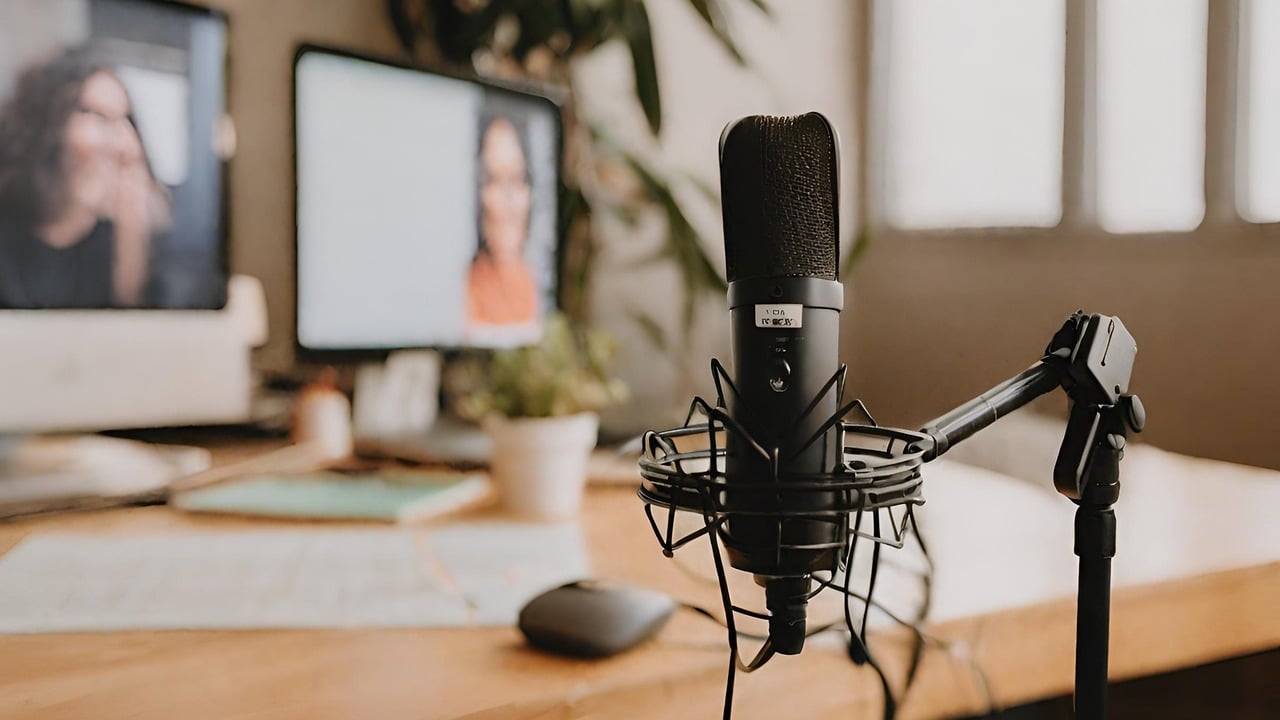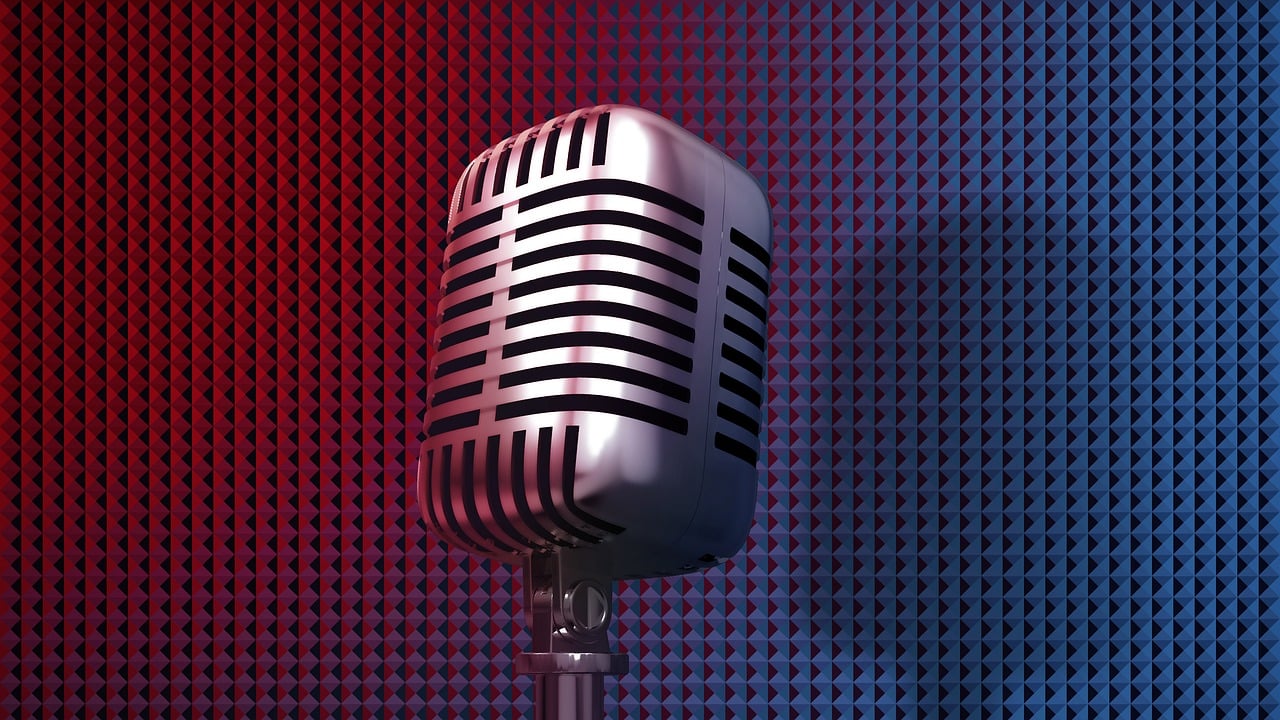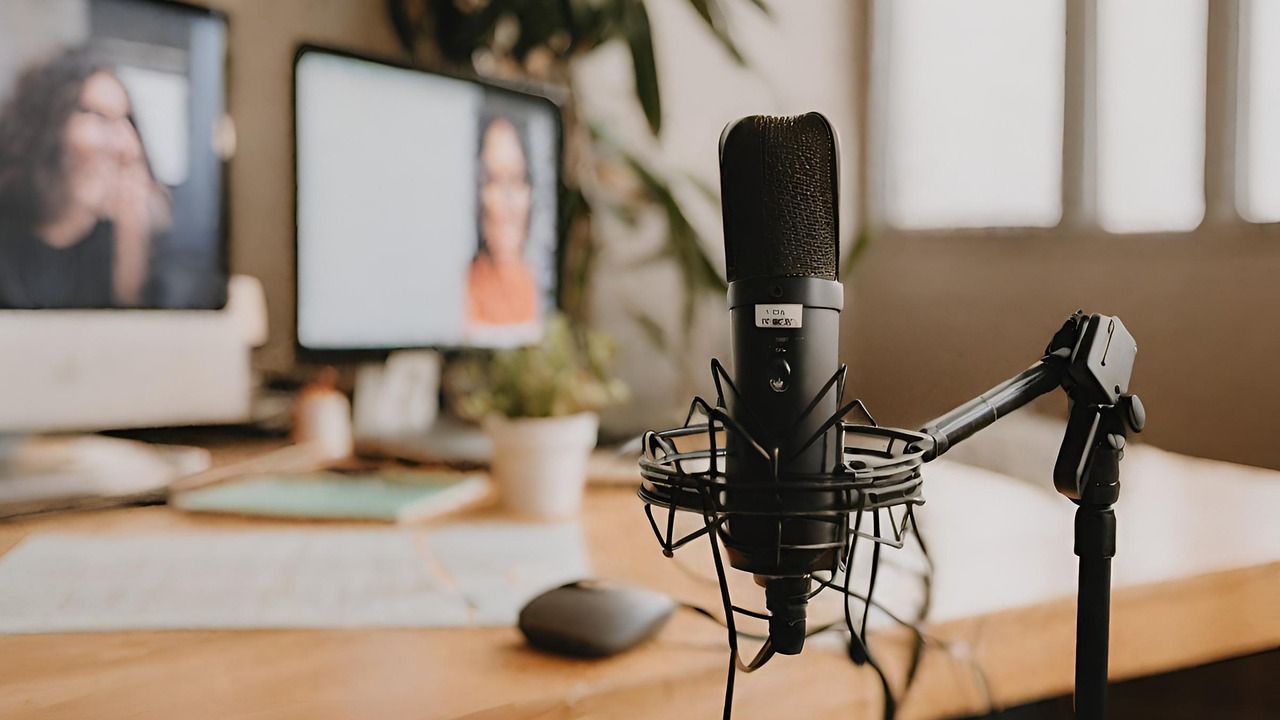Have you ever wondered if a podcast is simply a conversation? In this article, we will explore the intriguing world of podcasts and delve into the question of whether they are truly just conversations. With the prominence of podcasts in today’s digital landscape, it’s important to examine the various aspects that make up this popular medium, including microphone usage, podcast interviews, and the editing process. Join us as we dive into the intricacies of podcasting and uncover the answer to this thought-provoking question: Is a podcast really just a conversation?

Understanding the Concept of Podcasting
Definition of Podcasting
Podcasting refers to the process of creating and distributing digital audio or video files over the internet that can be downloaded and listened to or watched at the listener’s convenience. It is essentially a form of media that allows individuals, known as podcasters, to express their thoughts, ideas, or expertise on a particular subject in an episodic format. Podcasts are typically structured and organized, providing listeners with a series of episodes that they can subscribe to and listen to on-demand.
History of Podcasting
The history of podcasting can be traced back to the early 2000s when the term itself was coined by combining “iPod,” Apple’s portable media player, and “broadcasting.” The concept was popularized by the emergence of RSS (Really Simple Syndication) feeds, which allowed automatic updates and distribution of audio files. In 2004, Adam Curry, known as the “Podfather,” and Dave Winer played a significant role in developing the podcasting technology.
The Media Explosion of Podcasts
Over the years, podcasting has experienced a significant boom in popularity, with millions of podcasts available on a wide range of topics. This explosion can be attributed to several factors, including the increased accessibility of smartphones, the ease of creating and distributing podcasts, and the growing demand for on-demand audio content. Podcasts have evolved from a niche hobby into a mainstream form of media, enabling individuals to connect, learn, and entertain themselves.
Unpacking the Elements of Podcasts
Introduction to Podcast Formats
Podcasts come in various formats, each with its unique style and purpose. Interview-based podcasts involve conversations between a host and one or more guests, where topics are discussed in-depth. Narrative storytelling podcasts present stories and narratives, often with elements of fiction or documentary-style storytelling. Educational podcasts focus on teaching and sharing knowledge on specific subjects, while roundtable discussions involve a panel of experts discussing topics of interest. Additionally, there are comedic podcasts, true crime podcasts, and many other formats that cater to different interests.
The Importance of Podcast Structure
A well-structured podcast is crucial for engaging and retaining listeners. The structure of a podcast includes elements such as a clear introduction, segments or topics, transitions, and a conclusion. A strong introduction helps set the tone and grabs the listener’s attention, while well-defined topics or segments provide a sense of organization and coherence. Effective transitions between topics prevent the podcast from feeling disjointed, and a thoughtful conclusion provides closure and leaves the listener with a lasting impression.
Popular Categories of Podcasts
Podcasts cover a wide range of topics, catering to virtually every interest imaginable. Some popular categories include true crime, personal development, comedy, technology, news and current affairs, business, health and wellness, and storytelling. Within each category, there are countless niche topics that allow podcasters to target specific audiences and provide specialized content. The popularity of certain categories can vary over time, influenced by current trends and societal interests.
Podcasts and Conversations: The Similarities
Engagement in Podcasts and Conversations
One of the key similarities between podcasts and conversations is the level of engagement they generate. In both cases, there is a dynamic exchange of ideas, opinions, and information. Podcast hosts strive to create a conversational atmosphere that feels inclusive and welcoming to listeners. Similarly, engaging conversations involve active listening, asking questions, and allowing for meaningful dialogue to take place. Both podcasts and conversations have the power to captivate and create connections between individuals.
The Natural Flow and Unpredictability
Both podcasts and conversations often follow a natural flow, allowing for spontaneity and unpredictability. While podcasts may have a general structure, they often leave room for organic conversations to evolve and take unexpected turns. This allows for authentic and genuine discussions that can make the listening experience more enjoyable and relatable. Similarly, engaging conversations between individuals can take unexpected directions, leading to valuable insights and moments of serendipity.
Role of Empathy in Both Podcasts and Conversations
Empathy plays a crucial role in both podcasts and conversations. In podcasts, hosts strive to empathize with their audience, understanding their needs, interests, and preferences. This helps tailor the content and delivery to create a meaningful and resonant listening experience. Similarly, empathy is vital in conversations as it allows individuals to connect on an emotional level, to understand and appreciate different perspectives, and to foster genuine human connections. Empathy fosters a sense of understanding and inclusivity in both podcasts and conversations.
Podcasts and Conversations: The Differences
Planning in Podcasting vs Spontaneity in Conversations
While both podcasts and conversations embrace spontaneity, there is often a significant difference in planning and structure. Podcasts generally require some level of planning, including research, topic selection, and scripting. This allows podcasters to provide well-thought-out content that is informative and entertaining. On the other hand, conversations tend to be more spontaneous, where individuals freely express their thoughts and engage in an unscripted exchange of ideas. This spontaneity can lead to dynamic and engaging conversations.
Podcasting’s Need for Equipment and Editing
Unlike conversations, podcasting often requires specific equipment and editing. Podcasters rely on high-quality microphones, soundproofing, and audio editing software to ensure optimal sound quality. These tools help create a professional and polished listening experience for the audience. In contrast, conversations can take place anywhere and do not require specialized equipment or editing. They are more organic and unfiltered, capturing the natural essence of human interaction.
The Intended Audience: Public vs Private
Podcasts have an intended audience, typically reaching a wide range of listeners. They are public in nature, potentially accessible to anyone with an internet connection. Podcasters aim to create content that resonates with a broad audience, often exploring topics that have universal appeal. Conversations, on the other hand, are often private and intended for a specific audience. They involve direct interaction between individuals and are not intended for public consumption. Conversations can be more intimate and personal, catering to the needs and interests of the individuals involved.

The Role of the Microphone in Podcasting
Importance and Impact of Sound Quality
In podcasting, sound quality is of utmost importance as it directly impacts the listener’s experience. A high-quality microphone is essential to capture clear and crisp audio, ensuring that the host’s voice and any guest speakers are easily understood. Good sound quality helps maintain engagement and enhances the overall professionalism of the podcast. Listeners are more likely to continue listening and subscribe to podcasts with superior sound quality.
Best Microphones for Podcasting
Choosing the right microphone is crucial for podcasters seeking optimal sound quality. There are various options available, ranging from dynamic microphones to Condenser microphones. Dynamic microphones are known for their durability and ability to handle loud environments, making them suitable for podcasting. Condenser microphones, on the other hand, offer higher sensitivity and capture more detail, making them ideal for studio recording. Popular microphones for podcasting include the Audio-Technica ATR2100x-USB, Shure SM58, and Rode NT-USB.
Tips for Microphone Use During Podcasting
To maximize the potential of a microphone during podcasting, there are a few essential tips to keep in mind. Firstly, positioning the microphone correctly is crucial to capture clear audio. It is recommended to position the microphone at a suitable distance from the mouth, ensuring consistent sound capture without distortion. Additionally, using a pop filter can help reduce plosive sounds such as “p” and “b” sounds. Lastly, regular maintenance of the microphone, such as cleaning and checking for any connectivity issues, helps ensure optimum performance.
Examining the Podcast Interview
Structuring an Effective Podcast Interview
A podcast interview requires careful planning and structuring to create a captivating and informative episode. It is essential to research the guest and their expertise, allowing the host to ask relevant and engaging questions. A well-structured interview typically includes an introduction of the guest, an exploration of their background and experiences, and the discussion of specific topics or insights. It is crucial to strike a balance between allowing the guest to share their expertise and maintaining the podcast’s overall flow and direction.
Tips for Conducting Engaging Interviews
Conducting engaging interviews involves several key strategies and techniques. Firstly, active listening is essential to show genuine interest and encourage the guest to provide detailed responses. It is also helpful to ask open-ended questions that prompt the guest to delve deeper into their experiences and opinions. Additionally, creating a comfortable and conversational atmosphere can contribute to an engaging interview. This involves using appropriate humor, maintaining a positive tone, and being respectful of the guest’s viewpoints.
Dealing with Challenges During Podcast Interviews
Challenges can arise during podcast interviews, requiring flexibility and adaptability from the host. Technical difficulties, such as sound issues or connectivity problems, can disrupt the flow of the conversation. It is important to address these challenges promptly, either by taking a short break to resolve the issue or by having alternative methods of communication available. Additionally, handling differing opinions or controversial topics with sensitivity and respect is important to ensure a constructive dialogue and maintain a positive listener experience.

The Role of Scripting in Podcasting
Differences Between Scripted and Unscripted Podcasts
In podcasting, there is a distinction between scripted and unscripted formats. Scripted podcasts involve detailed planning and writing of a script that guides the flow and content of each episode. This format allows for precise organization and delivery of information, ensuring a consistent and polished result. Unscripted podcasts, on the other hand, emphasize spontaneity and natural conversation. While there may be general talking points, unscripted podcasts allow for more improvisation and genuine interaction.
Benefits and Constraints of Scripting
Scripting offers several benefits in podcasting. It allows podcasters to carefully craft their message, ensuring that important information is conveyed clearly and concisely. It also provides a sense of structure and organization, reducing the potential for tangents or repetitive content. Additionally, scripting can help minimize nerves or discomfort for podcasters who may prefer having predetermined talking points. However, scripting can sometimes limit the organic flow and authenticity of the conversation, making it essential to find the right balance between scripted content and spontaneity.
Balancing Scripting and Spontaneity in Podcasts
Finding the right balance between scripting and spontaneity is crucial to creating engaging podcasts. Even if a podcast is primarily scripted, allowing space for improvisation and natural conversation can enhance the listener’s experience. This can be achieved by incorporating moments of unscripted dialogue, responding to unexpected insights or questions, and encouraging guest participation. By striking the right balance, podcasters can provide informative and well-structured content while maintaining the authenticity and dynamic nature of conversations.
Editing the Podcast
Why Editing is Essential in Podcasting
Editing plays a vital role in producing a polished and professional podcast. It allows podcasters to refine the content, remove distractions or mistakes, and enhance overall sound quality. Through editing, podcasters can create a seamless listening experience, ensuring that episodes flow smoothly and engage the audience. Editing also enables the removal of repetitive or irrelevant content, optimizing the episode’s length and focus. Ultimately, editing is essential in capturing and maintaining the listener’s attention throughout the entire episode.
Understanding the Basics of Podcast Editing
Podcast editing involves several key steps to improve the overall quality and coherence of each episode. The process typically begins with listening to the recorded material and selecting the segments to include. Editing software is then used to trim or remove any unnecessary sections, rearrange the order of content if needed, and adjust volume levels for optimal audio balance. Special attention is also given to transitions between segments to ensure a smooth flow. Finally, additional enhancements, such as adding music or sound effects, can be done to enhance the overall listening experience.
Common Podcast Editing Software
There are numerous podcast editing software options available, catering to various skill levels and budgets. Some popular choices include Adobe Audition, Audacity, GarageBand (for Mac users), Hindenburg Journalist, and Reaper. Each software has its unique features and capabilities, allowing podcasters to edit, mix, and enhance audio with precision. It is important to choose a software that aligns with individual needs and preferences, ensuring a seamless editing experience and a high-quality final product.

Learning from Popular Podcasts
Analyzing Top-Rated Podcasts
Studying successful and top-rated podcasts can provide valuable insights and inspiration for aspiring podcasters. Analyzing these podcasts involves examining their content, delivery style, structure, and engagement with the audience. By identifying common themes or strategies used by successful podcasters, one can gain a better understanding of what resonates with listeners and how to create similar engaging experiences. Additionally, studying top-rated podcasts within specific categories can help identify emerging trends and preferences within those genres.
Influential Factors in Successful Podcasts
Several influential factors contribute to the success of podcasts. Firstly, content that is genuinely informative, entertaining, or thought-provoking is vital in attracting and retaining listeners. The quality of the production, including sound quality and overall professionalism, also plays a significant role. Furthermore, consistent release schedules, effective marketing and promotion, and engaging interaction with the audience through social media platforms are all factors that contribute to the success of a podcast.
Lessons from Popular Podcast Hosts and their Conversational Styles
Popular podcast hosts often have unique conversational styles that resonate with listeners. Studying their techniques and approaches can provide valuable lessons for aspiring podcasters. Some hosts have a relaxed and casual approach, making their listeners feel like they are part of a friendly conversation. Others employ a more direct and informative style, focusing on delivering content in an engaging manner. Finding a conversational style that aligns with individual personality and the target audience is crucial for creating authentic and enjoyable podcast experiences.
Is a Podcast Just a Conversation?: Making the Final Verdict
Recap of Similarities and Differences
After exploring the various dimensions of podcasting and conversations, it is evident that there are both similarities and differences between the two. Podcasts share similarities with conversations in terms of engagement, natural flow, and the role of empathy. However, differences arise in terms of planning, equipment and editing requirements, and the intended audience. Both podcasts and conversations offer unique benefits, and understanding their similarities and differences provides a nuanced perspective on their respective roles and dynamics.
Understanding User Perception
Perceptions of podcasts and conversations can vary among individuals. Some may view podcasts as a more structured and curated form of media, while others may appreciate the intimate and spontaneous nature of conversations. The perception of each medium depends on personal preferences, experiences, and expectations. Rather than being limited to one perception, it is important to recognize that both podcasts and conversations offer valuable opportunities for connection, learning, and entertainment.
Conclusion: Relating to a Podcast as a Listener
As a listener, approaching podcasts with an open mind and curiosity can lead to a fulfilling and enriching experience. Being aware of the effort and thought that goes into producing podcasts can enhance one’s appreciation for the content and the individuals behind it. Recognizing the unique elements of podcasts, such as the role of scripting, editing, and sound quality, can deepen the connection with the medium. Ultimately, approaching podcasts as a listener offers the chance to engage with a diverse range of ideas, stories, and conversations, adding value to one’s life.

